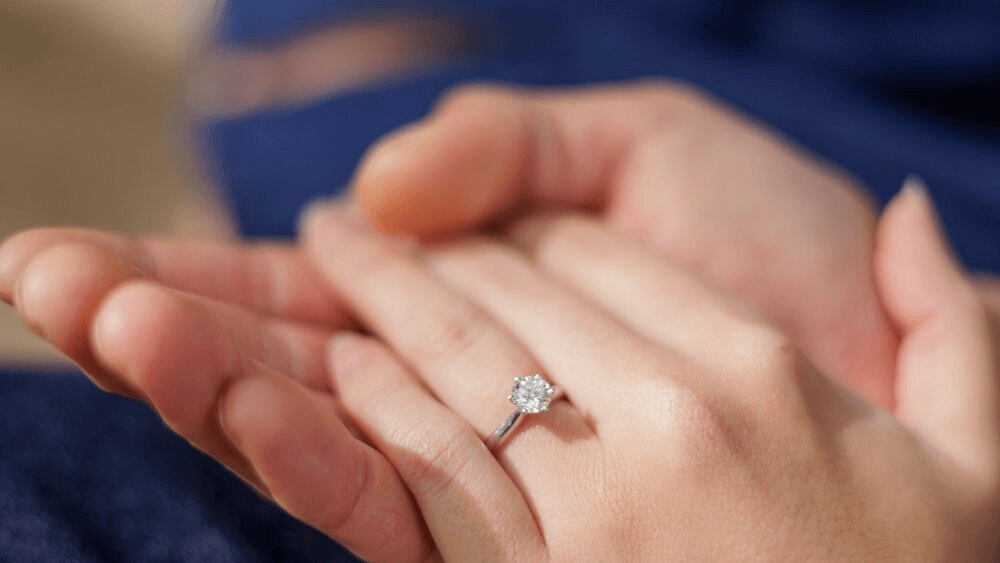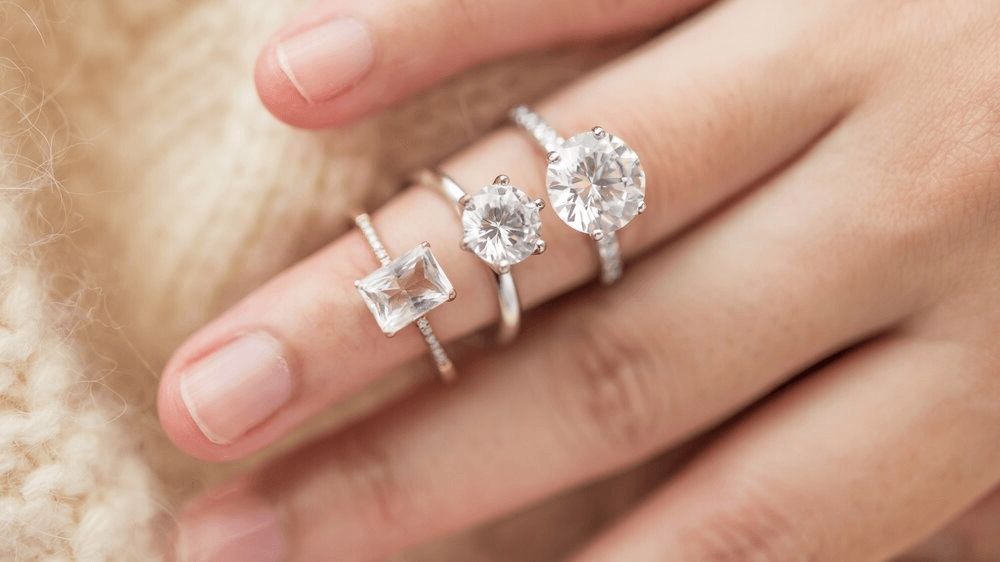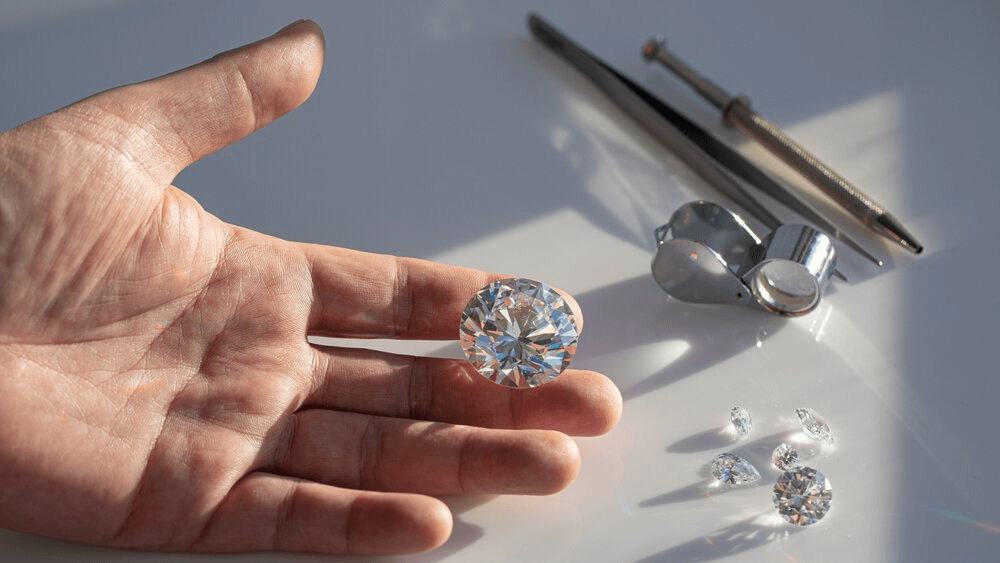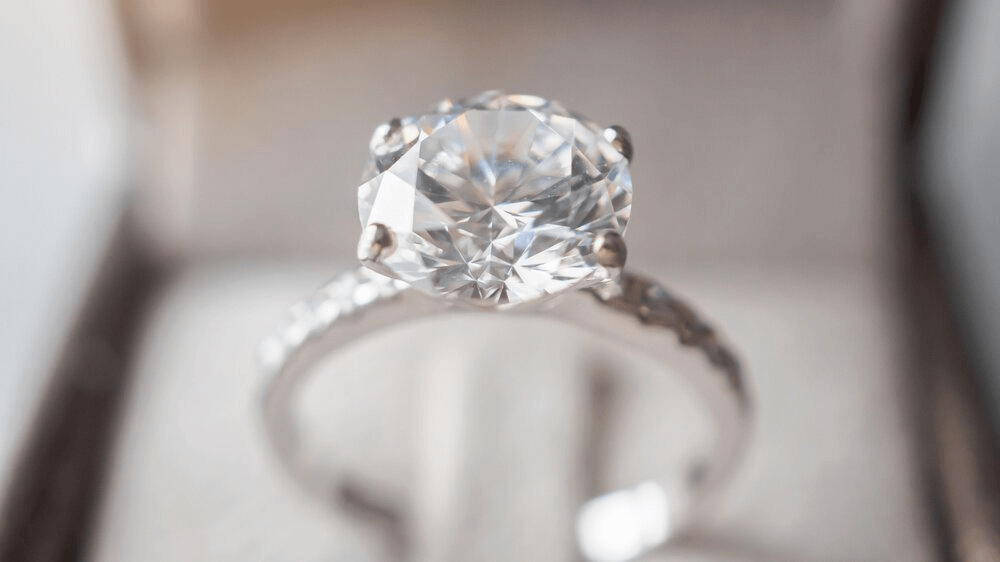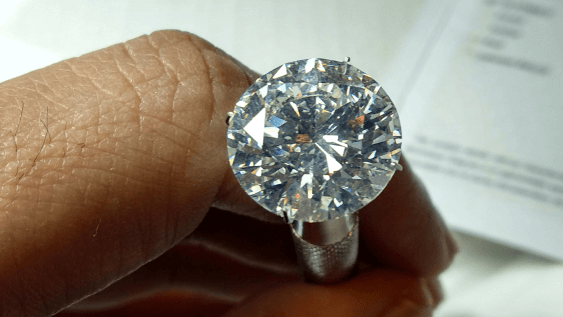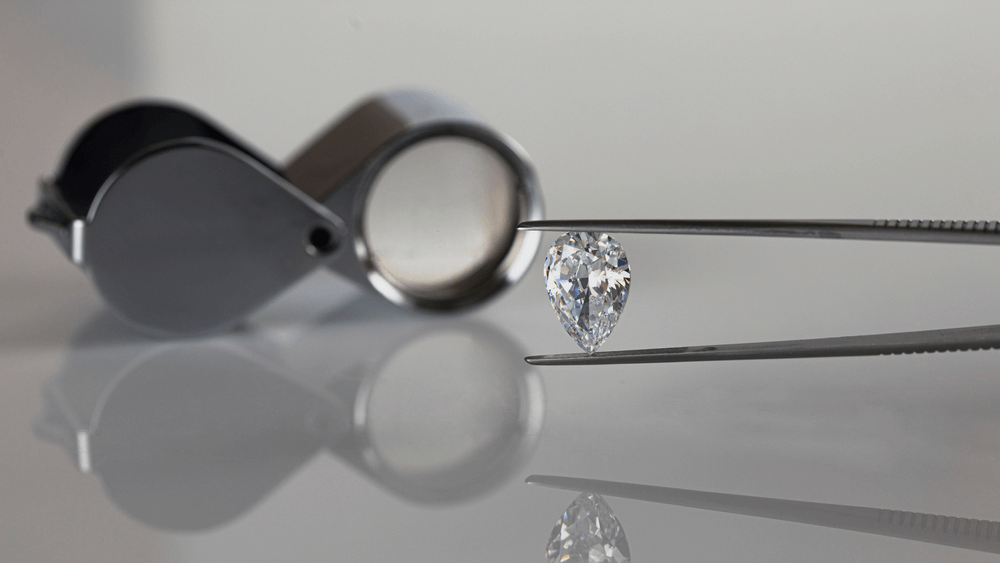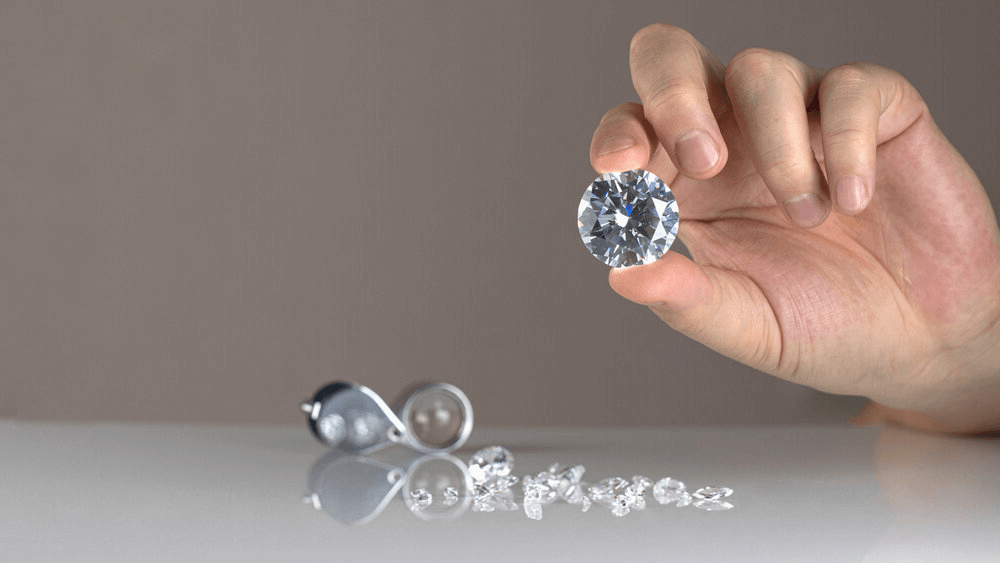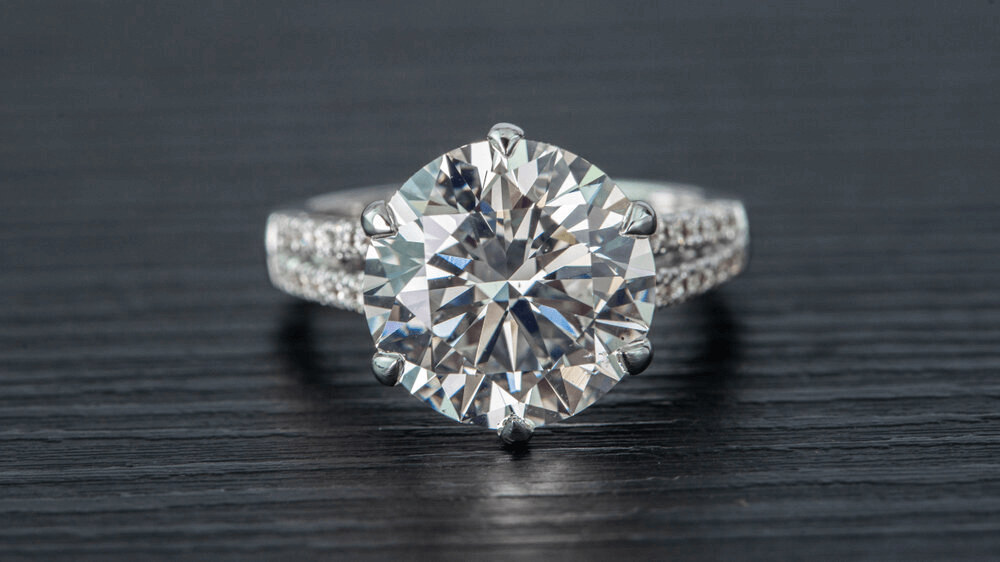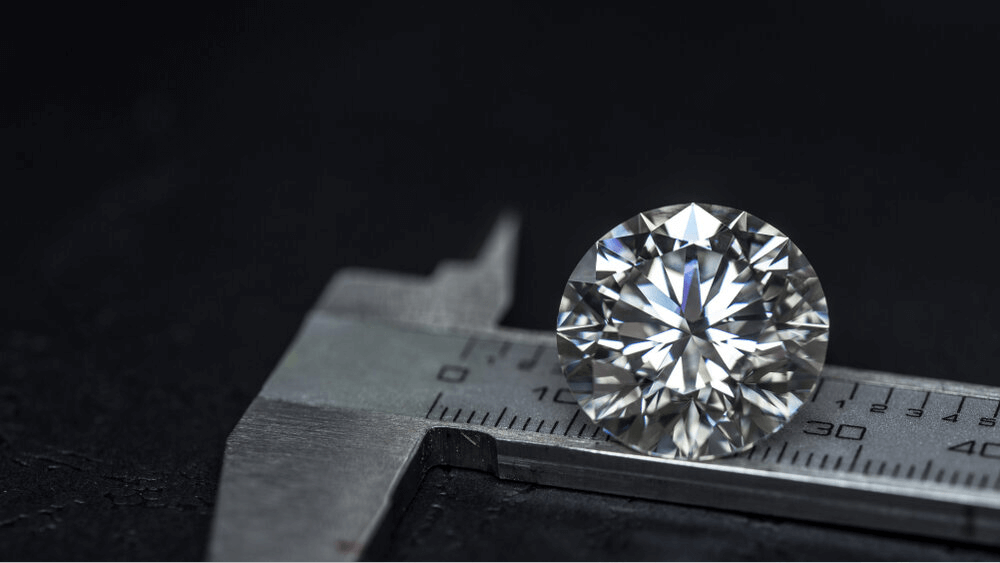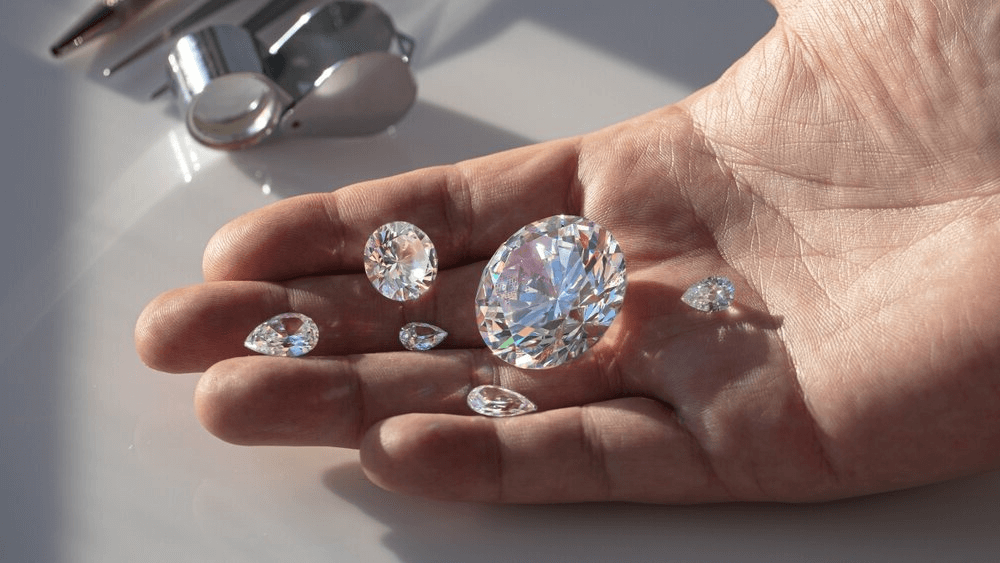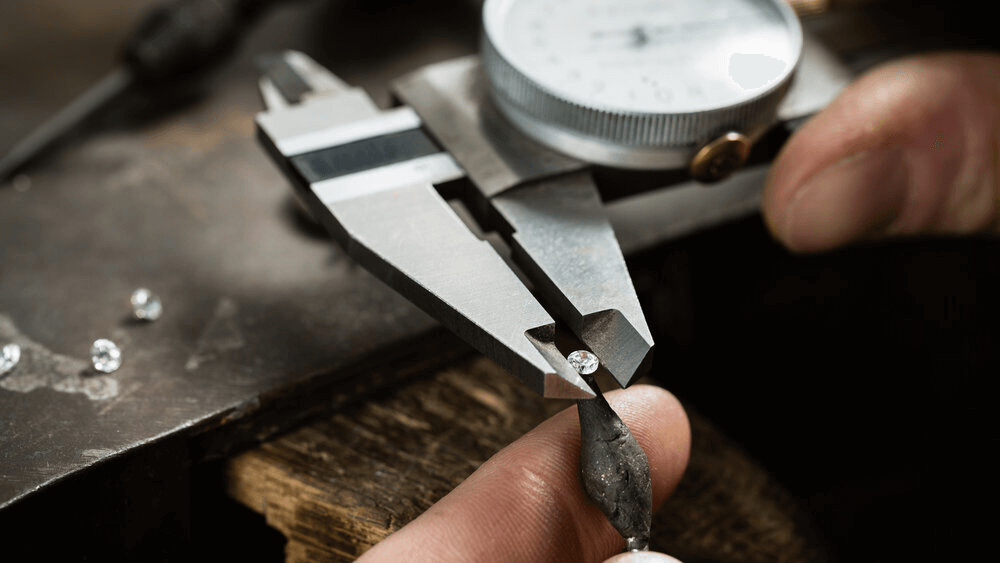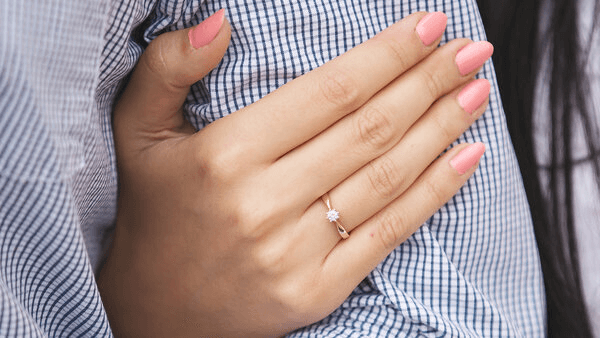How Much is Too Much? The True Cost of 5 Carat Diamond Ring!

By Gary A.

Edited by Olivia H.
Published Aug 8, 2022
Edited on Feb 10, 2025
When it comes to timeless luxury, a 5 carat diamond strikes the perfect balance between size and sophistication, making it a stunning choice for those seeking true brilliance.

Navigate This Guide:
- 7 Quick Tips When Considering 5 Carat Diamond Engagement Rings
- Introduction to 5 Carat Diamond Ring
- Understanding 5 Carat Diamond Price Factors
- Natural vs Lab-Grown 5 Carat Diamonds
- 5 Carat Lab-Grown Diamonds: A Smarter Choice?
- Choosing the Perfect 5 Carat Diamond Ring
- Our Expert Take: The Rarity and Value of 5 Carat Diamonds Make it a Real Winner
- FAQs
Before we dive deeper into the specifics, here are some practical tips to help guide your decision-making process:
7 Quick Tips When Considering 5 Carat Diamond Engagement Rings
Purchasing a 5 carat diamond engagement ring is a significant investment, and understanding the nuances of diamond pricing and quality is crucial. Here are practical tips to guide you in making an informed decision, ensuring you get the best value and a stunning piece that symbolizes your love and commitment.
- Tip 1: Analyze the Cut Quality: The cut of a diamond greatly influences its beauty and brilliance. For 5 carat diamonds, the cut becomes even more critical due to their size. A well-cut diamond will exhibit superior sparkle and fire, making it appear more vibrant and captivating. Look for cuts rated as “Excellent” or “Ideal” to ensure maximum brilliance and light performance.
- Tip 2: Understand the Color Grade: Color plays a pivotal role in determining a diamond’s appeal. With larger stones like 5 carat diamonds, slight color variations are more noticeable. Prioritize diamonds in the near-colorless range (G-H) to balance quality with cost. These grades offer a good compromise, appearing colorless to the naked eye without the premium price of the colorless grades (D-F).
- Tip 3: Consider Clarity Wisely: Clarity refers to the presence of internal imperfections (inclusions) and surface defects (blemishes). In 5 carat diamonds, inclusions can be more visible, but choosing a diamond with a clarity grade of VS1 or VS2 can provide a visually flawless appearance without the hefty price tag of higher clarity grades. It’s essential to view the diamond in person or request high-resolution imagery to assess clarity.
- Tip 4: Evaluate Diamond Shape and Proportions: The shape of the diamond can affect both its aesthetic appeal and price. Classic shapes like round or oval tend to be more expensive due to demand and cutting waste. For a 5 carat diamond, also consider proportions, as they influence the stone’s visual size and appeal. Ensure the diamond’s depth and table percentages are within ideal ranges for its shape.
- Tip 5: Research the Market and Pricing: Understanding the current market for 5 carat diamonds is essential. Prices can vary significantly based on cut, color, clarity, and other factors. Research online, visit multiple jewelers, and compare prices to get a sense of the market. This knowledge will help you recognize a fair price and avoid overpaying.
- Tip 6: Examine the Diamond Certificate: A diamond certificate from a reputable grading entity, such as GIA or AGS, provides an unbiased assessment of the diamond’s characteristics. Ensure the 5 carat diamond comes with a certificate detailing its cut, color, clarity, and carat weight. This document is vital for verifying the diamond’s quality and ensuring its value.
- Tip 7: Consider the Setting and Overall Design: The ring setting can enhance the diamond’s appearance and protect it. For a 5 carat diamond, choose a setting that securely holds the stone and complements its size and shape. Additionally, the ring’s overall design should align with the wearer’s style and preference. The setting should not only showcase the diamond but also be practical for everyday wear.
Now that you’ve got these practical tips, use Jeweler AI below to find the perfect engagement ring that suits your style and budget:
Introduction to 5 Carat Diamond Ring
At WillYou.com, we spend enough time thinking about engagement rings, looking at engagement rings, and talking about engagement rings that we’re pretty used to dreaming about them, too. So, if you come onto our site looking to find the dream engagement ring for your partner, we can safely say that you’re in the right place.
For a lot of people, that dream engagement ring is practically synonymous with ‘the biggest ring you can find’. As you can imagine, we totally understand why. While there’s a lot we love about smaller diamonds and daintier engagement rings, there’s something indescribably exciting about an engagement ring that goes above and beyond. A diamond so big that it seems to have its own gravitational pull – one we can’t and don’t want to, fight against – really is the kind of thing that dreams are made of.
The catch? A really, truly beautiful 5 carat diamond comes at a price – and a big one at that. If you were to launch yourself straight into the jewelry world – head directly toward the diamond district, say – then it wouldn’t take long for you to come across a 5 carat diamond at an absolute steal.
But, as with any carat weight range, there are great 5 carat stones and there are terrible, waste-of-time-and-money duds. Read our guide to make sure you don’t walk home with one.
Understanding 5 Carat Diamond Price Factors
There are multiple elements that determine a diamond’s price. The four C’s and the size of the carat itself are the most important. When it comes to size, a 5 carat round cut is above average, with a typical diameter of over 11mm.
One of the first things you’ll want to get your head around is the fact that diamonds do not double in size each time the carat weight doubles. In other words, a 5 carat diamond will not be twice the size of a 2.5 carat diamond, just as a 2 carat diamond is not twice the size of a 1 carat diamond.
Carat is a unit of measurement for weight, rather than size. Larger diamonds still need to be cut to very particular proportions in order to be considered good quality, so extra weight needs to be distributed throughout the stone – not just in the face-up appearance, where the diameter is measured.
Nevertheless, a 5 carat diamond is still significantly – and very noticeably – bigger than the more ‘common’ carat weight ranges, and this is why the price is higher.
The most popular carat weight for a diamond engagement ring is 1 carat, and a 5 carat Round diamond is going to have a diameter that is approximately 4.6mm larger. If we’re comparing dinner plates, that’s a very small difference – but, in the world of diamonds, that’s an unmissable, unmistakable difference that will really stand out from the rest.
Factors Influencing 5 Carat Diamond Prices
In general, you can expect to see 5 carat diamonds range in price from $45,000 to $750,000, depending on their quality and rarity.
It’s important to remember that a diamond’s price goes beyond size and weight. Why would anyone pay closer to the top-end when they can get a 5 carat diamond for less than $50,000? Because, like most things, those diamonds available at the very low end of the spectrum are riddled with quality issues – issues that really will ruin the impact your diamond has, even on non-expert eyes.
Diamonds can look incredible – these are the diamonds we’re used to seeing in pictures and in the movies – or they can be totally ruined by their own flaws. That’s not to say that you need to pay for the very best in quality to get a beautiful stone – there’s a healthy middle ground that we can help you to find, where the price is far more realistic – but it is to say that you can’t aim for that low-end price and expect to walk home with a showstopper of a diamond.
At WillYou.com, we’re committed to demystifying diamond prices – to making you aware of all the factors that determine that final number on the ticket – and to giving you the practical knowledge you need to avoid over- or under-spending on your diamond, no matter the carat weight.
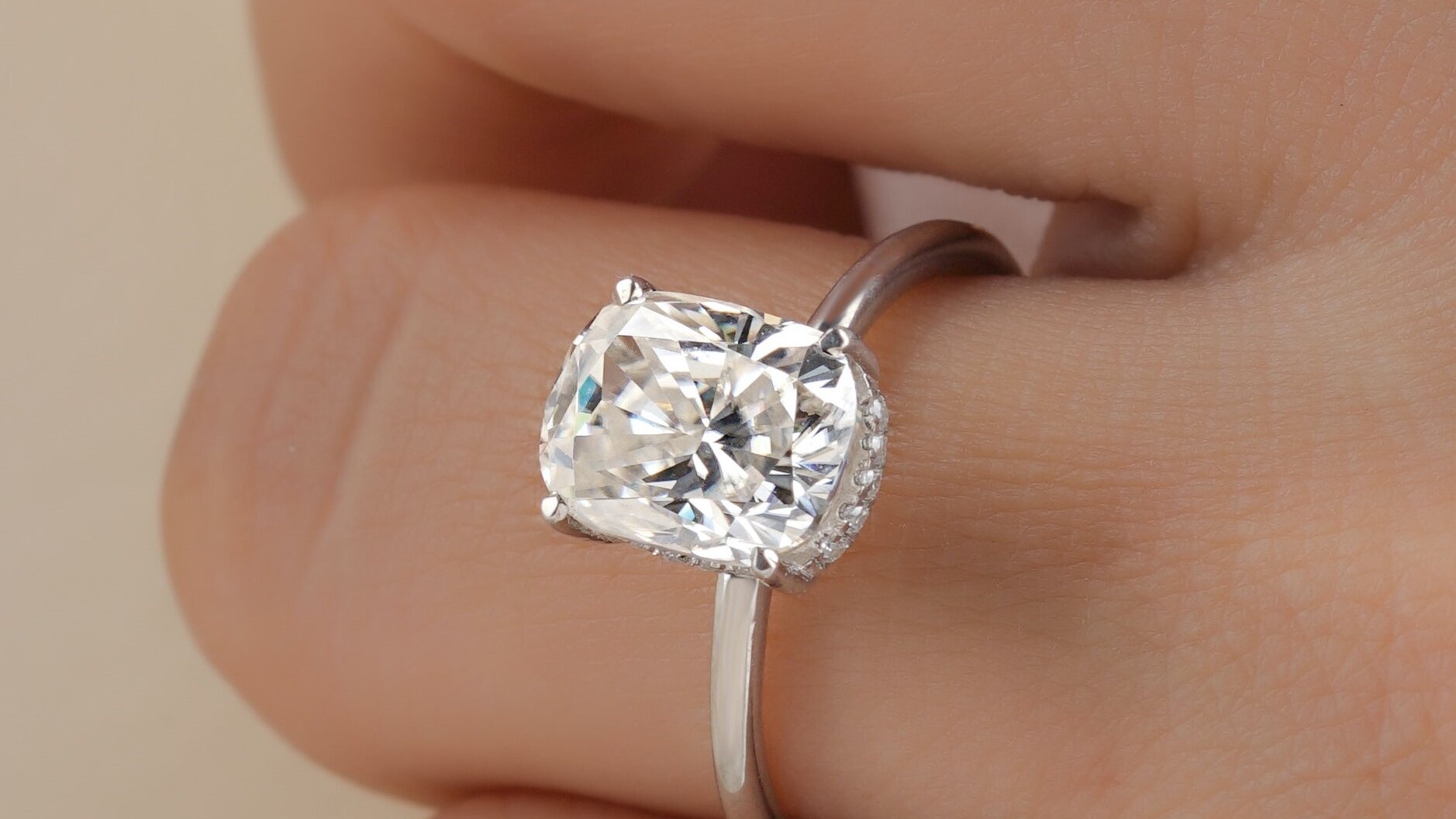
Cut, Color, Clarity, and Carat – Decoding the 4Cs
By now, you have probably run into the phrase ‘the Four Cs’ at least once. They are the most important things you need to think about before you hand over your money, and ‘Carat weight’ is just one of them. So, while you know you’re in the market for a 5 carat diamond, there is plenty more to think about besides weight alone.
Color, for instance, is particularly important. When it comes to the 5 carat diamond, we’d recommend you focus on the higher end of the Near Colorless range – grades G and H – to get the best value without sacrificing on quality.
Despite the fact that these grades are classed as ‘Near Colorless’ rather than ‘Colorless’, it’s important to remember that each one of these grades, from D to Z, is incrementally ‘worse’ than the one that came before it. What’s more, color is graded under extremely particular lighting conditions and equally extreme magnification. If the grader can barely see it – and, as a result, considers it very nearly colorless – it’s highly unlikely you will ever see it, even if you wear that diamond every day for decades.
That said, when you’re looking at bigger diamonds, it’s important that you don’t see every grade within that ‘Near Colorless’ range as the same. For smaller diamonds, a color grade of I or J is often perfectly fine, and far more reasonably priced. But, in larger diamonds, it’s easier to see color – and, as a result, it’s better to avoid dipping below an H grade.
D, E, and F are, objectively speaking, the best grades. For you, however, the high premium attached to the colorless grades is not the best way to bag a great diamond at the best price possible.
The Visual Impact of 5 Carat Rings
Some people think that a 5 carat ring is too big, but we don’t agree. It’s definitely a lot bigger than what the ‘average’ person would expect for their engagement ring – and, as a result, it may be a little harder to get used to wearing, but that’s part of the fun.
The only mistake you could make is assuming that ‘bigger is better’ if you know your partner prefers to keep things low-key. The popularity of bigger diamond engagement rings doesn’t mean that everyone will want to wear a diamond that knocks your socks off from across a crowded room. Only you can know what your partner wants.
That said, if you’re confident that a whopper of a diamond is exactly what she wants, you don’t need to worry about 5 carats being ‘too big’, because there’s no such thing. Even on slender hands, a 5 carat diamond won’t hang over the edges of the finger – but, at the same time, it will be big enough to be very flattering on any hand shape or size.
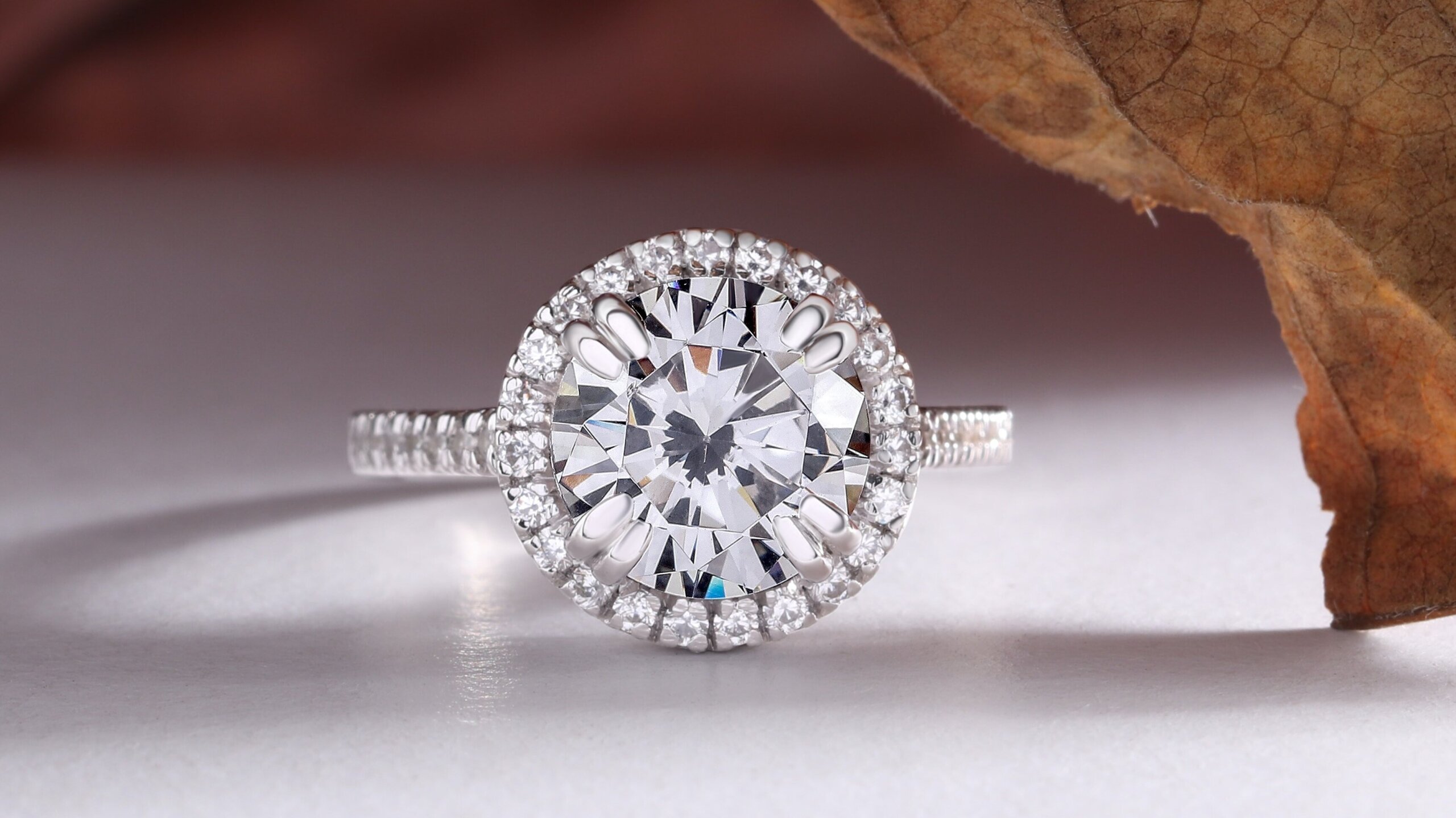
Natural vs. Lab-Grown 5 Carat Diamonds
When choosing a 5 carat diamond, the decision between natural and lab-grown is significant.
Natural diamonds form over millions of years, offering a unique beauty and a story that many find irresistible. However, they can be quite pricey, with costs driven by factors like quality and rarity.
In contrast, lab-grown diamonds are made in controlled environments and share the same qualities as natural stones. Typically, they cost 70-90% less than their natural counterparts, making them a budget-friendly choice without sacrificing brilliance.
Ultimately, your decision will depend on your personal values. Both options provide stunning beauty, ensuring your 5 carat diamond will be a cherished symbol of love.
Here’s a table showcasing the average prices for natural and lab-grown 5 carat diamonds:
| Carat | Shape | Color | Clarity | Natural Price | Lab-Grown Price |
|---|---|---|---|---|---|
| 5 | Round | F | VS2 | $150,000 | $10,700 |
| 5 | Pear | F | VS2 | $110,000 | $10,200 |
The table above illustrates the significant price difference between natural and lab-grown 5 carat diamonds. For instance, a natural round diamond with a color grade of F and clarity of VS2 can cost around $150,000, while its lab-grown equivalent is priced at just $10,700. Similarly, a natural pear-shaped diamond of the same specifications costs approximately $110,000 compared to $10,200 for a lab-grown version.
5 Carat Lab-Grown Diamonds: A Smarter Choice?
For couples seeking a large, dazzling diamond without the hefty price tag of natural diamonds, lab-grown options are a game-changer. Thanks to technological advancements, lab-grown diamonds of this size are more accessible and offer unique opportunities to customize your dream ring.
Tailored Practical Tips for Selecting 5 Carat Lab-Grown Diamonds
- Focus on Rarity within Lab-Grown: While lab-grown diamonds are generally more affordable, a 5 carat stone still represents the top echelon of availability. Be sure to secure a certification (such as IGI) to validate its quality.
- Experiment with Unique Shapes: Larger diamonds, like 5 carats, lend themselves well to cuts beyond the classic round—oval, emerald, or pear shapes offer stunning visual impact and often lower prices.
- Consider Mixed Metals: Pairing a lab-grown diamond with a modern, mixed-metal band (e.g., white and rose gold) can make a bold statement while keeping the focus on the diamond’s brilliance.
The Future of 5 Carat Lab-Grown Diamonds
As more buyers prioritize ethical and eco-friendly practices, lab-grown diamonds continue to rise in popularity. A 5 carat lab-grown diamond reflects this shift beautifully, blending timeless luxury with modern values.
Price of 5 Carat Lab Grown Diamonds
The cost of a 5 carat lab grown diamond generally falls between $9,000 and $11,500, influenced by several factors including cut, color, clarity, and market demand. In comparison, lab grown diamonds are about 70-85% less expensive than natural diamonds of similar quality. This affordability empowers couples to opt for larger and higher-quality stones, enhancing the overall worth of their investment. A comprehensive understanding of the intricate variables affecting diamond pricing is crucial, as this knowledge helps consumers to navigate the market more effectively.
Rated by clarity and color quality:
| Shape | Low | Medium | High |
| Round | $8,500 | $9,600 | $11,000 |
| Fancy Shape | $7,600 | $9,000 | $10,500 |
For those looking for inspiration, here are some recently purchased 5 carat lab grown diamond engagement rings:
| Diamond | Setting | Price |
| Lab-Created 5.67 Carat G, VVS2 Ideal, Oval | 18K Yellow Gold Side Stones | $13,005 |
| Lab-Created 5.04 Carat D, VS2 Ideal, Cushion Modified | 14K White Gold Halo | $10,487 |
| IGI Lab-Grown 5.02 Carat F-VVS2 Cushion | 14K White Gold Halo Cushion Outline Pave Engagement Ring | $11,370 |
| IGI Lab-Grown 5.00 Carat F-VS2 Excellent Cut Round | 14K White Gold Bow-Tie Channel Set Diamond Engagement Ring | $10,020 |
| IGI Lab-Grown 5.13 Carat D-IF Oval Cut | 14K White Gold Cable Solitaire Engagement Ring | $11,220 |
| IGI Lab-Grown 5.51 Carat F-VVS2 Oval Cut | 14K White Gold Cable Solitaire Engagement Ring | $10,160 |
| IGI Lab-Grown 5.01 Carat E-VVS2 Round | 14K White Gold Pave Halo Engagement Ring (Round Center) | $11,350 |
| IGI Lab-Grown 5.22 Carat H-IF Princess Cut | 14K White Gold Channel Set Princess Cut Diamond Engagement Ring | $11,460 |
| IGI Lab-Grown 5.02 Carat G-VS2 Marquise Cut | 14K White Gold East West Petite Pave Engagement Ring | $11,480 |
| IGI Lab-Grown 5.09 Carat F-VVS2 Pear Shaped | 14K White Gold French Cut Pave Diamond Engagement Ring | $11,550 |
| IGI Lab-Grown 5.04 Carat F-VVS2 Emerald Cut | 14K White Gold Pave Halo and Shank Diamond Engagement Ring | $10,540 |
| IGI Lab-Grown 5.05 Carat E-VVS2 Pear Shaped | 14K White Gold Pave Twist Diamond Engagement Ring | $12,030 |
| IGI Lab-Grown 5.06 Carat E-VVS2 Pear Shaped | 14K White Gold Perfect Pave Engagement Ring | $12,280 |
| IGI Lab-Grown 5.15 Carat H-VS1 Oval Cut | 14K White Gold Rope Solitaire Engagement Ring | $12,530 |
| IGI Lab-Grown 5.25 Carat H-VS1 Oval Cut | 14K White Gold Shared Prong Marquise Side Stone Diamond Engagement Ring | $11,370 |
| IGI Lab-Grown 5.36 Carat H-VS1 Oval Cut | 14K White Gold Six Prong Solitaire Engagement Ring | $11,390 |
| IGI Lab-Grown 5.10 Carat Cushion Modified | 14K White Gold Three Stone Pear Shaped Engagement Ring | $10,200 |
| IGI Lab-Grown 5.52 Carat E-VVS2 Pear Shaped | 14K White Gold Vintage Infinity Engagement Ring | $10,250 |
Choosing the Perfect 5 Carat Diamond Ring
If you want a perfect 5 carat diamond ring, however, you need to think carefully and avoid falling into the most obvious pitfalls. If you’re thinking of a halo design for your engagement ring, for instance, keep in mind that the extra bulk may make the ring wider than your partner’s finger. There’s nothing necessarily wrong with this, and it’s not something she can’t get used to, but people with a more active lifestyle may find it a little cumbersome.
A weight of 5 carats is the equivalent of 1 gram or 0.03 ounces. Your partner will definitely be aware of it sitting there on her hand, but it’s not going to weigh heavy or slow her down.
If you need any more inspiration, keep in mind the fact that 5 carat diamonds are pretty popular among celebrities. Mila Kunis’ engagement ring from Ashton Kutcher, for instance, is rumored to fall right around the 5 carat mark – and the same goes for Kristin Cavallari. If style icons are embracing them, you know you’re onto a winner.
A solitaire sounds simple, but 5 carats is more than enough to create that wow factor. If you want a little extra beauty without the added bulk, consider a hidden halo, which will draw in more light and throw off even more brilliance and fire without competing with the 5 carat diamond for attention.
Alternatively, give the band its own sparkle with a pavé setting.
Keep in mind that the more popular setting options, including the various types of prong settings, typically require some kind of adjustment period. They hold the diamond higher above the finger – a big benefit for the diamond, since the more light that is able to reach it, the more it can sparkle – and that does naturally mean that the diamond will catch and snag at first.
There’s no doubt that wearing a 5 carat diamond ring will take time to get used to, but that’s true of practically any diamond ring of any size. This is why the setting is so important. The only diamond ring styles we can think of that would be ‘easy’ to wear from the first moment they slide onto the finger are flush set and bezel set rings. Both of these styles keep the diamond ‘level’ with the metalwork, which means that they’re not going to snag or scrape when you’re going about your daily business.
Our Expert Take: The Rarity and Value of 5 Carat Diamonds Make it a Real Winner
A beautiful 5 carat diamond will stop people in their tracks – bring conversations to a halt – and bring a true touch of magic to your proposal. It’s certainly a big investment and a big stone to wear on your finger –but, when it all comes together, you’ll find it’s more than worth the time and money you put into choosing it.
One thing to remember is not to get complacent. Just because you’ve got a big budget to blow, doesn’t mean everything available at your price point will be worth buying. Diamonds vary drastically in terms of quality, and you need to be able to distinguish between a great investment and a waste of money.
Remember that we are here to help you turn your vision into a design – to put into words what it is that your partner wants – and, most importantly, to make you and your partner’s dreams come true. But, in order to do that, it helps if you’re able to bring that vision to the table in the first place. Do your research, take your time, and don’t assume that the path of least resistance is the one that will yield the very best results.
FAQs
- Q: How Much Does a 5 Carat Diamond Ring Typically Cost?
A: The cost of a 5 carat diamond ring can range from $45,000 to over $750,000, depending on factors like cut quality, color, clarity, and the ring’s setting. - Q: What is the Best Cut for a 5 Carat Diamond?
A: The ideal cut for a 5 carat diamond is either an Excellent or Ideal cut, which maximizes brilliance and fire, making the diamond appear more vibrant. - Q: Are Color and Clarity More Important in Larger Diamonds?
A: Yes, in larger diamonds like a 5 carat, color and clarity become more noticeable. A near-colorless grade (G-H) and a clarity grade of VS1 or VS2 usually offer a good balance of appearance and value. - Q: Is a 5 Carat Diamond Ring Too Big for Everyday Wear?
A: A 5 carat diamond is significant in size but can be suitable for daily wear with the right setting that ensures comfort and security. - Q: How Can I Ensure I’m Getting a Fair Price on a 5 Carat Diamond Ring?
A: Research the market, compare prices across different jewelers, and ensure the diamond comes with a certification from a reputable grading entity. - Q: What Should I Look for in a Diamond Certificate for a 5 Carat Diamond?
A: The certificate should provide detailed information about the diamond’s cut, color, clarity, and carat weight, and should be from a recognized grading entity like GIA or AGS. - Q: Does the Shape of a 5 Carat Diamond Affect Its Price?
A: Yes, the shape can affect the price. Round and oval shapes are often more expensive due to their popularity and cutting waste, whereas shapes like emerald or cushion may be more affordable. - Q: How Do I Choose the Right Setting for a 5 Carat Diamond?
A: Select a setting that securely holds the diamond and complements its size. A setting that protects the diamond’s edges, like a bezel or halo, is often recommended for larger stones. - Q: How expensive is a 5 carat diamond compared to others?
A: A 5 carat diamond is exponentially more expensive than smaller diamonds due to its rarity. For instance, while a 1 carat diamond may cost $5,000–$15,000, a 5 carat diamond could be 10 to 50 times more expensive, depending on quality. - Q: Where to buy a 5 carat diamond ring?
A: You can purchase a 5 carat diamond ring from reputable jewelers, both online and in-store. Look for retailers that provide certified diamonds from grading entities like GIA or IGI and offer customization options for settings. - Q: How much does a 5 carat lab-grown diamond cost compared to a complete 5 carat lab-grown diamond ring?
A: A lab-grown 5 carat diamond typically costs between $9,000 and $13,000, while a lab-grown diamond ring with a 5 carat stone ranges from $10,000 to $15,000. The final price depends on the diamond’s quality (cut, clarity, and color) and the choice of setting. - Q: What does a 5 carat diamond look like on hand?
A: A 5 carat diamond has a bold and noticeable presence on the hand. For a round cut, it typically has a diameter of over 11mm, making it a statement piece suitable for those who love luxurious and eye-catching jewelry. - Q: How big does a 5 carat diamond look?
A: A 5 carat diamond is approximately the size of a small grape or a nickel in diameter, depending on the cut and shape. It has a significant visual impact due to its size and brilliance. - Q: How many mm is a 5 carat round diamond?
A: A 5 carat round diamond typically measures around 11.1mm in diameter, though exact dimensions vary depending on the cut quality and depth. - Q: How much does a 5 carat diamond weigh (in grams)?
A: A 5 carat diamond weighs approximately 1 gram. Carat is a unit of weight, with 1 carat equaling 0.2 grams. - Q: How much does a 5 carat yellow diamond cost?
A: A 5 carat yellow diamond generally costs between $25,000 and $150,000, depending on the intensity of the color, clarity, and cut. - Q: How much is a 5 carat cushion cut diamond?
A: A 5 carat cushion cut diamond can cost between $40,000 and $500,000, with the price influenced by quality and certification.
Thinking of a 5 carat diamond ring? Jeweler AI can show you the best options and help you create the perfect engagement ring. Get started today!
Here are more specific diamond prices topics to browse:
- Melee Diamonds: The Perfect Accents to Enhance the Center Stone
- Small Diamond Engagement Rings: Big Sparkle Comes In Little Packages
- 0.25 Carat Diamond: Tiny Treasure or Just Too Small?
- The True Value of a 0.5 Carat Diamond Ring Revealed
- 0.7, 0.8, 0.9 Carat Diamond Showdown: Which One Wins?
- Price Alert: Don’t Overpay for a 1 Carat Diamond Ring!
- What You Should Pay for a 1.5 Carat Diamond Ring?
- Price Alert: How Much Should You Pay for a 2 Carat Diamond Ring?
- How Much Does a 2.5 Carat Diamond Really Cost?
- The Real Cost of a 3 Carat Diamond Ring
- Industry Secret: How Much Does a 4-Carat Diamond Ring Actually Cost?
- 6 Carat Diamond Rings: Pricing Breakdown & Value Tips
- 7 Carat Diamond Rings: Affordable Luxury Prices Revealed
- 8 Carat Diamond Rings: Price Comparison & Savings Tips
- 9 Carat Diamond Rings: Detailed Pricing Guide & Best Deals
- 10-13 Carat Diamonds: The Ultimate Symbol of Luxury!
- 15 Carat Diamonds: Why Celebrities Love Them!
- Unveiling the Majesty: The Secrets Behind the 20 Carat Diamond Ring!
- Decoding the Grandeur: The Journey to Choosing a 25 Carat Diamond Ring
- Average Carat Size for Rings: What’s the Ideal?
- Understanding What Is CTTW Diamond In Engagement Ring
- The Truth About Why Diamonds Are So Expensive and Incredibly Valuable
FOLLOW-UP GUIDE SERIES

